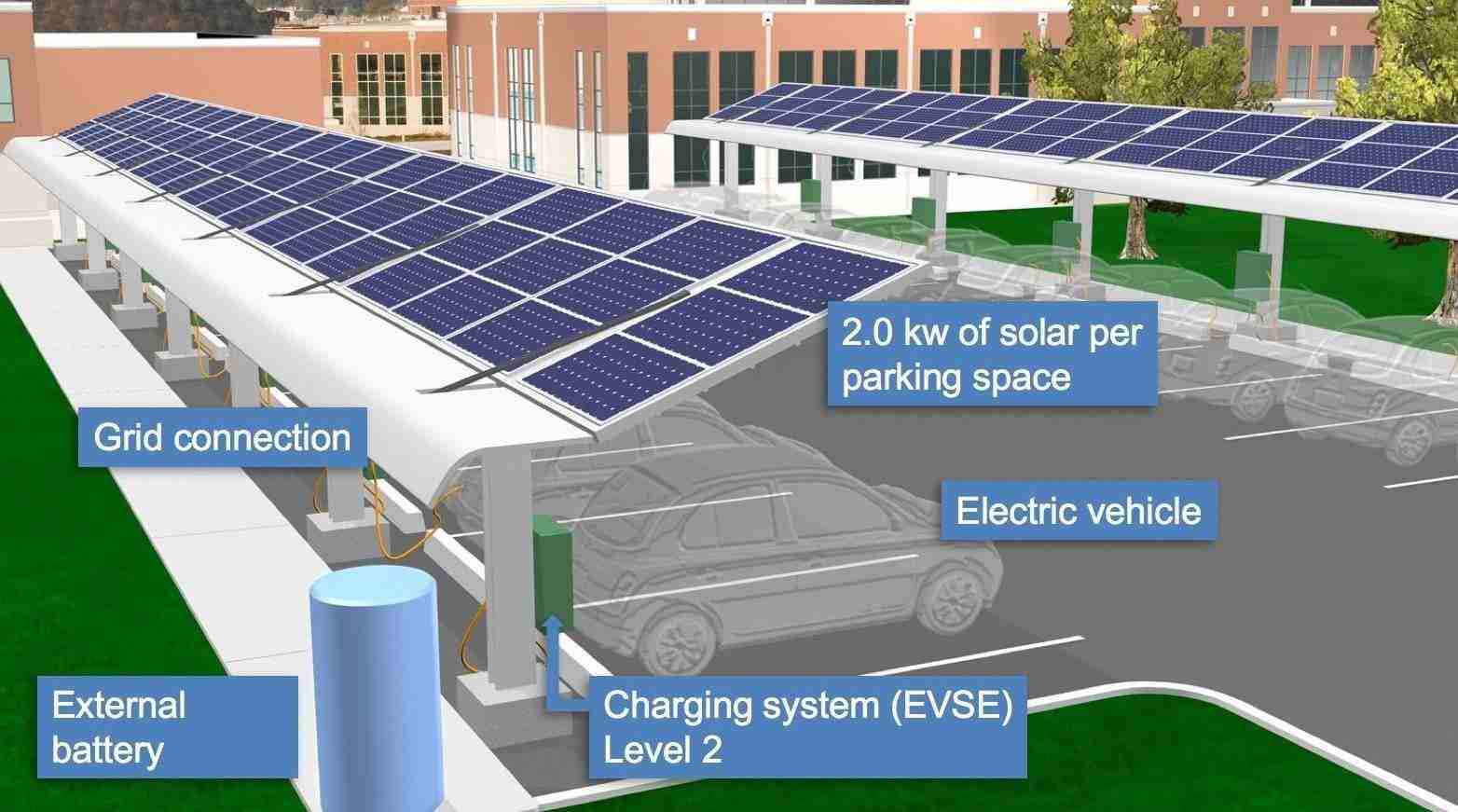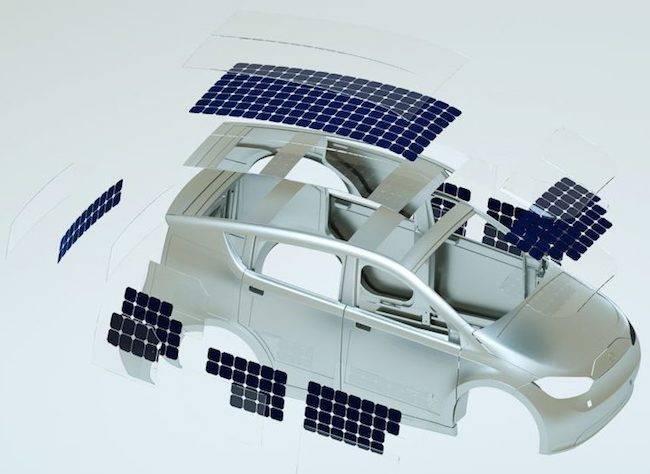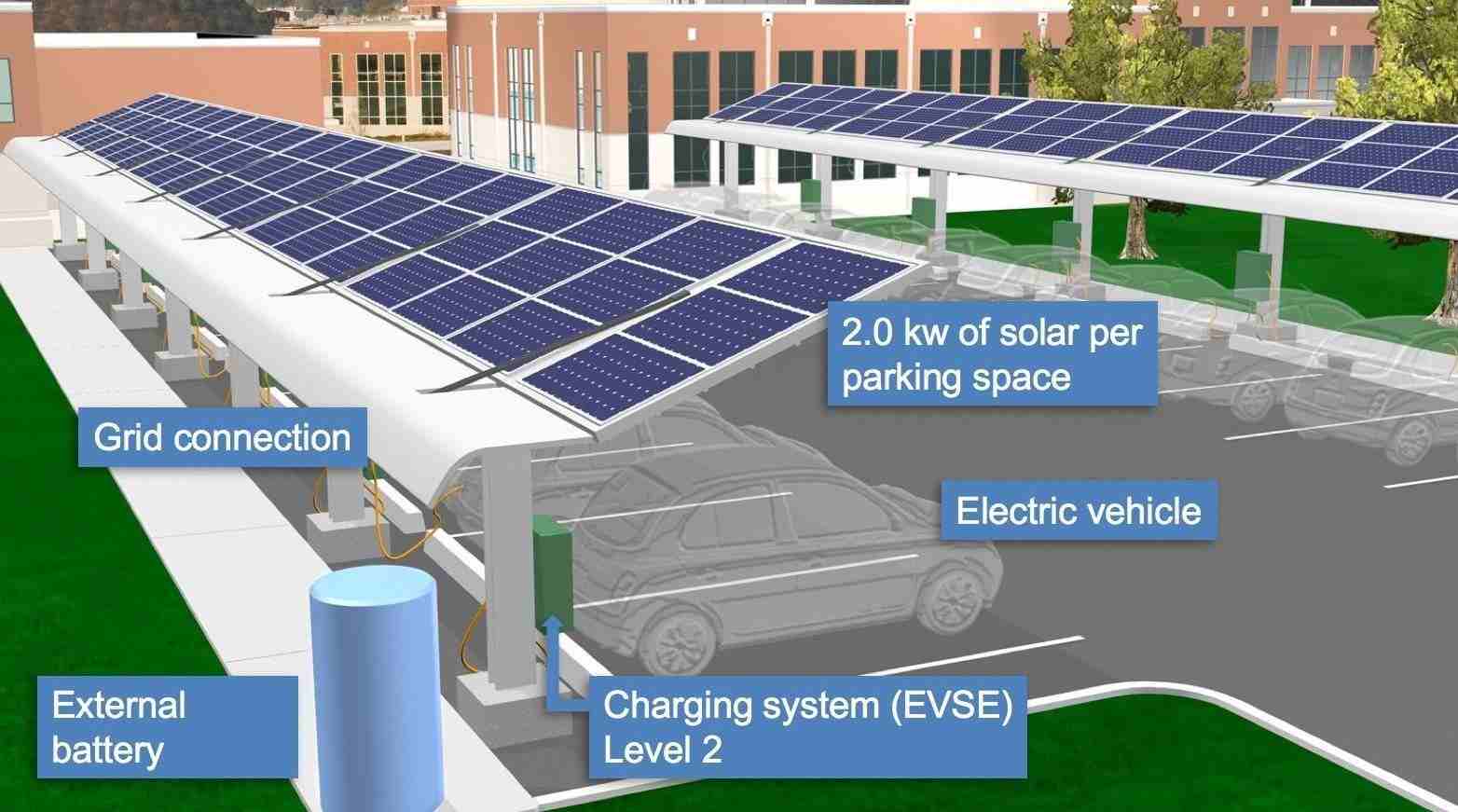The Integration of Two Renewable Technologies: An EV and The PV

Introduction
Electric vehicles with greater advantages of no noise, no pollution, energy saving, and carbon dioxide emissions reduction are power-driven vehicles with moving motor drive wheels. In order to reduce our greenhouse gas emissions and other pollution, solar electric vehicles can do this. Research and application of solar electric vehicles as a “hot spot” for the automotive industry and the trend for future cars are all advantages of solar electric vehicles. The electric solar vehicle is made of PV panels, batteries, Vehicle controller, electric motor and vehicle body. Using dual-mode PV and battery hybrid, solar electric vehicle drives. PV-driven and battery-driven can be achieved independently. In good sunny conditions, compared with no PV panels, the full charge endurance of solar electric vehicles can be substantially increased by around 35%. Low carbon, energy saving, environmental protection and true zero-emission for the future of human life can be achieved by solar electric vehicles. Good EV characteristics are not only clean and easy to handle in driving, but also in development. Electrically powered vehicles are available in three types, including hybrid electric vehicles (HEV), plug-in electric vehicles (PHEV) and pure electric vehicles (PEV). A HEV is designed for the use of both an internal combustion engine and an electric motor. A conventional HEV is a vehicle in which, from two or more types or types of energy stores, sources or converters, propulsion energy is available and at least one of them can deliver electrical energy. The PHEV is very similar to the conventional hybrid electric vehicles currently available on the market and uses a combination of grid electricity, brake regenerative energy and other on-board power sources, such as internal combustion engines or fuel cells. The key technology for the application of the PHEV is high battery performance. In place of petrol, a PEV uses batteries to power the motor engine. The fact that there are no greenhouse gas emissions is important. Only batteries that are recharged from the grid or through regenerative braking rely on PEVs.
Benefit of solar panels on Electric Vehicles

The presence of a photovoltaic panel on a Plug-In Hybrid Electric Vehicle (PHEV) can enhance the Vehicle to Grid (V2G) technology development: in this approach, plug-in vehicles can also supply power to the grid, in addition to receiving power when parked. Apart from reduced tailpipe emissions and increased mileage, the use of PHEV for V2G can provide benefits for both the vehicle owner and the power utility company, especially when the number of vehicles connected to the grid is large. In this context, this opportunity also prevents solar energy supplied by PV panels to the car from being wasted when car batteries are fully charged. In principle, by integrating photovoltaic panels into a hybrid electric vehicle, Hybrid Solar Vehicles (HSV) could therefore sum up the benefits of HEV and solar power. But considering the development of an HSV as a simple addition of photovoltaic panels to an existing hybrid electric vehicle, which could be considered just as a first step, would be simplistic. In fact, although it was based on well-established technologies, the development of HEVs showed how significant research efforts were needed to optimise the power-train design as well as to define the most appropriate control and energy management strategies. Similarly, to maximise the benefits of photovoltaic integration with HEV technology, precise re-design and optimization of the entire vehicle-powertrain system is required. In fact, there are many interactions between energy flows, component size of the propulsion system, vehicle dimension, performance, weight and costs in these vehicles, whose connections are much more critical than in conventional cars and in hybrid cars. By adopting appropriate Maximum Power Point Tracking (MPPT) techniques, whose role is more critical than in fixed plants, the impact of the contribution of solar panels can be significantly improved. In parking stages, the recourse to an automatic sun-tracking roof to maximise captured energy was also studied. In addition, the optimal power split between the internal combustion engine and the battery pack must be pursued, as is the case for other hybrid vehicles operating in start-stop mode, also taking into account the effect of thermal transient engines. Previous studies conducted by the Series Hybrid Solar Vehicles Research Group have shown that the combined effects of engine, generator and battery loss, together with cranking energy and thermal transients, produce non-trivial solutions for the engine/generator group that are not necessarily designed to operate at their maximum efficiency. The potential benefits of solar energy are clear: it is free, abundant and distributed more equally than other sources of energy, such as fossil fuels, uranium, wind and hydro. At the same time, the limitations of such a source of energy also seem clear-it is intermittent, due to the effects of relative motion between the Earth and the Sun, and variable in time, due to weather conditions. But its energy density is the most serious limitation for direct automotive use-the amount of radiation that theoretically occurs on the Earth’s surface is about 1360 W/m2 and only a fraction of this energy can be converted into electrical energy for propulsion use. Given that the space available for PV panels on a normal vehicle is limited from about 1 for panels equipping ‘normal’ vehicles to about 6 for some solar cars, it appears that the net power obtainable by a solar panel is about two orders of magnitude less than the power of most cars today. But this simple observation, which explains most of the automotive community’s scepticism about solar energy, is based on the misleading habit of thinking in terms of power instead of energy. In fact, the net energy required for traction can be approximately 8 kWh per day for a typical use in urban driving of no more than one hour per day, according to the latest Road Transport Statistics, with an average power of between 7 and 10 kW, considering the partial recovery of braking energy.
| Maximum Power (kW) | Average Power (kW) | Time (h/day) | Energy (kwh/day) | |
| EV | 70 | 8 | 1 | 8 |
| PV | 0.30 | 0.2 | 10 | 2 |
| PV/EV % | 0.4 % | 2.5 % | 1000 % | 25 % |
On the other hand, a 300 W peak power PV panel can operate for many hours, not far from its maximum power, particularly if advanced tracking techniques are adopted. Under these circumstances, a significant fraction of the required energy, up to 20-30 percent, can represent the solar contribution. Thus, when cars are used mostly in urban environments and intermittently, spending most of their time parked outdoors and, of course, in countries where there is “sufficient” solar radiation, the benefits of solar energy can be maximised. But, as will be shown in the following sections, feasible locations are not necessarily restricted to “tropical” nations.
Solar panels on charging stations

The system is designed to be used at workplaces to charge employees’ electric cars as they are parked during the day. With minimal energy exchange with the grid, the motive is to maximise the use of PV power for EV charging. There are several benefits of an EV-PV chargers. Firstly, reduced energy demand on the grid due to EV charging as the charging power is generated locally via solar panels in a ‘green’ way. Secondly, as an energy storage system for the PV, the EV battery doubles and reduces the negative impact of large-scale PV integration into the district construction network. Lastly, long EV parking time paves the way for Vehicle-to-Grid (V2G) technology to be implemented where the EV acts as a controllable smart grid spinning reserve. The design of an EV charging station based on PV was analysed in several earlier works. The mutual benefit of charging solar-powered EVs has been highlighted in that the potential to charge solar-powered EVs allows for greater penetration of both technologies.
The variability in PV output is a major disadvantage of charging EV from PV. Smart charging allows EV charging to be flexible to closely match the production of PVs. Smart charging combined with V2G has been shown to have the dual advantage of increasing PV self-consumption and reducing peak demand on the grid. In the EV charging profile, the time varies so that maximum PV utilisation takes place. It can be seen that, with higher EV penetration, excess PV energy decreases. Alternatively, the total number of cars charging at a constant power can be varied dynamically so that, as seen in, the net charging power follows the generation of PV. This kind of sequential charging is a great advantage compared to simultaneous EV charging. A scheduling time shift is used to manage the charging of e-scooters so that the PV profile is followed by the net charging power. With the use of weather forecast data, this method is further enhanced. It is important to distinguish the effects of the weekday and weekend EV charging load in the event of workplace charging. This is because, even at the week-end, rooftop PV installed in the workplace will generate energy even though the employee’s EVs are not present on Saturday-Sunday. Considering the above aspects, the new contributions to the work are as follows:
- Determination and comparison of the optimal orientation of PV panels for maximum energy yield imagery in the Netherlands with the use of tracking systems.
- Based on metrological conditions of the location, the possibility of oversizing the PV array power rating with respect to the power converter size.
- Dynamic EV charging using the Gaussian charging profile and prioritising the EV, which is superior to constant charging of power.
- Determination of the grid impact through running round-the-year simulation of two different types of workplace / commercial charging scenario considering 5 days / week and 7 days / week EV load.
- Optimal local storage sizing, taking into account both meteorological data and smart EV charging.
To summarize all this above, by nature, both EV and PV are inherently DC. Due to this, dynamic EV charging, where the charging power of the EV can vary with time, is possible as well as DC charging facilitates the protocol for vehicle-to-grid (V2G).
Impact of solar EVs on the Microgrid
1] Limitations: There are few problems with penetrations because of EV charging on the existing microgrid due to mass EV charging Penetration the picked load will increase suddenly in which from which the spikes can be seen in the voltage waveform. This will lead to the low quality of power overall power system gets unbalanced. On the other hand, due to the rapid increase in the picked load, it will affect the transformer present in the microgrid which results in the rapid aging of the transformer. EV charger is made of power electronics devices these components are responsible for generating harmonics. Due to V to G and G to V, the vehicle gets connected to the microgrid via charging station so atomically these harmonics get injected into the microgrid. This is also another major factor in malfunction power quality. This harmonic will be either current harmonic or voltage harmonics.
2] Solution:
- There are mainly three mitigation technologies to eliminate these malfunctions from the system.
- The simple method is inserting the capacitor banks. By installing capacitor banks, current harmonics may get removed.
- Other is installing DVR (Dynamic Voltage Restorer) it helps to remove voltage harmonics present in the system and it helps the voltage waveform to get restored to its rated value.
- Another method is using different types of droop controllers as per the requirement. It is a more accurate alternative as it has more efficiency as explained above. Therefore, by using any of the above power electronic devices, the stability in the microgrid can be maintained. It will increase the efficiency of the microgrid and it will eventually provide the highly reliable and feasible power to the consumers.
Conclusion
In conclusion, the electric vehicle has started becoming a major part of the automotive industry as it promotes an environmentally friendly mechanism and it works on clean energy technology. Because of their lower oil consumption and toxic emissions, HEVs are rapidly emerging as a potential alternative to the current state of transportation. HEVs will be propelled into the future of road transport by strict CO2 emission laws and increased public awareness. Market penetration of PHEVs will substantially alter electric grid operations, and efforts are being made to provide two-way communication between the user and the grid. A review of different HEV components such as architecture, bidirectional converter, ESS, engines and MPPT has been presented. Also, due to the advancement in the Vehicle to Grid (V2G) and Grid to Vehicle technology (G2V). The EVs are now also becoming a part of the microgrid and provide necessary ancillary services to it. Because of this, the Microgrid has the potential to becoming a solution for the challenges faced by both the consumers and conventional grids. These microgrids have the flexibility to be islanded or grid-connected. In most of the microgrids, the PV and wind system acts as the primary source of energy generation and on the hand the electric vehicle acts as an energy storage system (ESS).

